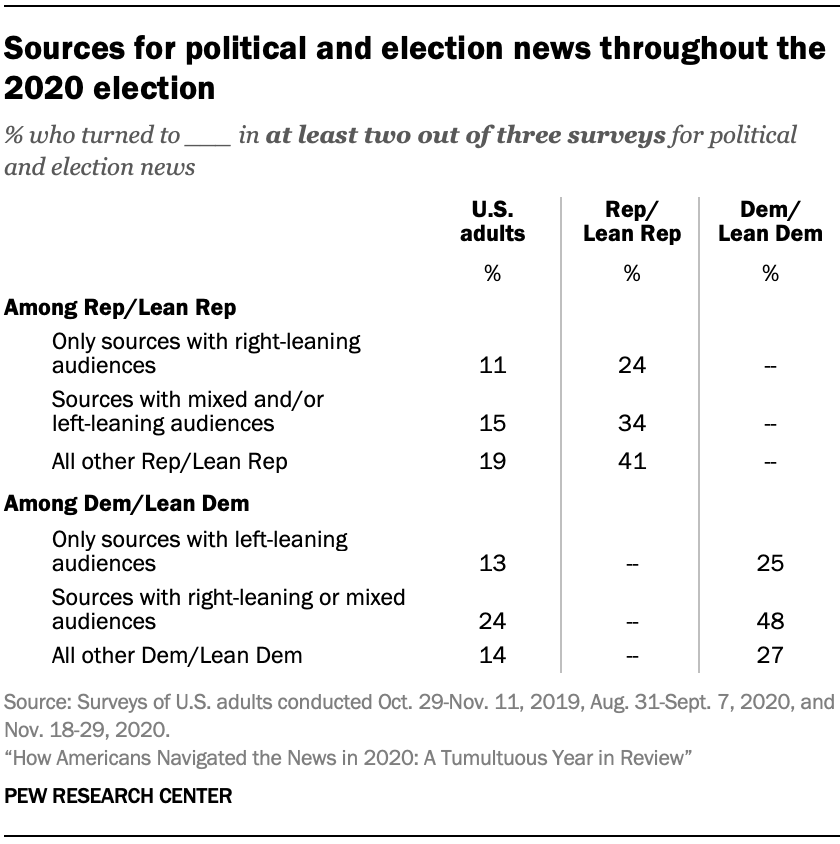
At three points during the 2020 election season, the American News Pathways project classified Americans’ news diets according to the political leanings of the audiences of the news outlets they used to get political and election news.
For the analysis in Chapter 1, respondents’ news diets from three surveys conducted in November 2019, September 2020 and November 2020 were combined to give a general sense of who consistently turned to news outlets with audiences that largely share their politics and who turned to outlets with more politically diverse audiences throughout the 2020 presidential election season. (Click on the links for each survey to see the details for how news diets were calculated at each point.)
The first survey asked about 30 separate news sources, while the second and third focused on eight of the top sources in that survey (used by about 10% or more of U.S. adults). Full lists of the outlets for each survey are available below.
All outlets were classified according to the political partisanship and ideology of their audiences in surveys conducted before the election in November 2019 and September 2020. An outlet is considered to have a left-leaning audience if the proportion of all audience members who identify as liberal Democrats is at least two-thirds higher than the proportion who identify as conservative Republicans. Alternatively, an outlet is considered to have a right-leaning audience if the proportion of all audience members who identify as conservative Republicans is at least two-thirds higher than the proportion that identify as liberal Democrats. An outlet is classified as having a mixed audience if neither liberal Democrats nor conservative Republicans make up at least two-thirds more of the audience than the other. (More details on how news outlets were classified are available in the appendices linked at the end.)
Based their news diets from these three surveys, Republicans and Democrats (both including independents who lean toward the party) are assigned to one of six groups:
- Among Republicans and Republican-leaning independents:
- Republicans who turned only to news sources with right-leaning audiences in at least two out of three surveys
- Republicans who turned to news sources with politically mixed and/or left-leaning audiences in at least two out of three surveys. (These Republicans may also have used outlets with right-leaning audiences in addition to those with mixed or left-leaning audiences.)
- All other Republicans
- Among Democrats and Democratic-leaning independents:
- Democrats who turned only to news sources with left-leaning audiences in at least two out of three surveys
- Democrats who turned to news sources with politically mixed and/or right-leaning audiences in at least two out of three surveys. (These Democrats may also have used outlets with left-leaning audiences in addition to those with mixed or right-leaning audiences.)
- All other Democrats
Appendices explaining how news diets were classified in each of the three surveys are available here: